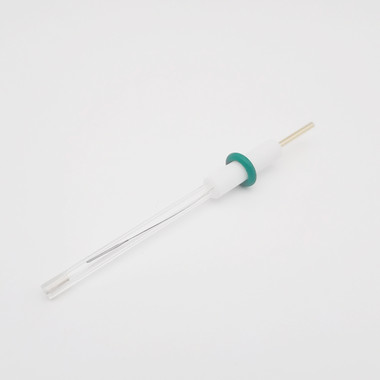How to extend the life of the reference electrode?
When you strictly follow the precautions for the reference electrode, you can extend the life of the reference electrode. You can refer to the following points:
1. During measurement, the reference electrode salt bridge liquid level should be (2-3) cm higher than the interface to be tested to prevent the liquid to be tested from diffusing into the reference electrode. For example, the liquid to be tested contains chlorides, sulfides and complexes. The inward diffusion of mixtures, silver salts and perchlorates will affect the potential of the reference electrode.
2. The filling liquid inside the reference electrode needs to be replaced frequently. The filling solution needs to choose the ratio of analytical pure reagent and DI water.
3. The electrode potential of SCE has a large negative temperature coefficient and thermal hysteresis, so try to prevent the large fluctuation of SCE temperature during measurement. The operating temperature of the calomel electrode should not exceed 70°. If the electrolyte environment exceeds 70°, a silver-silver chloride reference electrode should be used.
4. It should be noted that the silver chloride reference electrode is sensitive to light. When using and storing, it is necessary to avoid light as much as possible.
5. The preservation of the reference electrode is very important. When not in use for a short time, it can be immersed in saturated potassium chloride solution, which can prevent the clogging of the liquid-contact ceramic core and maintain the liquid-contact ceramic core in a normal working state. Never store in DI water. When the reference electrode is not used for a long time, it needs to be replaced with a new filling solution, plugged with a rubber cap, and stored in the dark.




Comments
Post a Comment